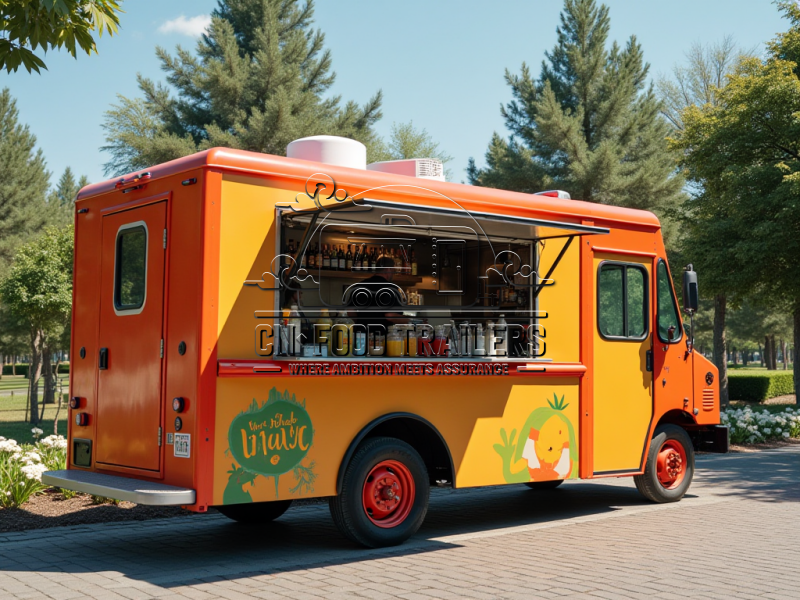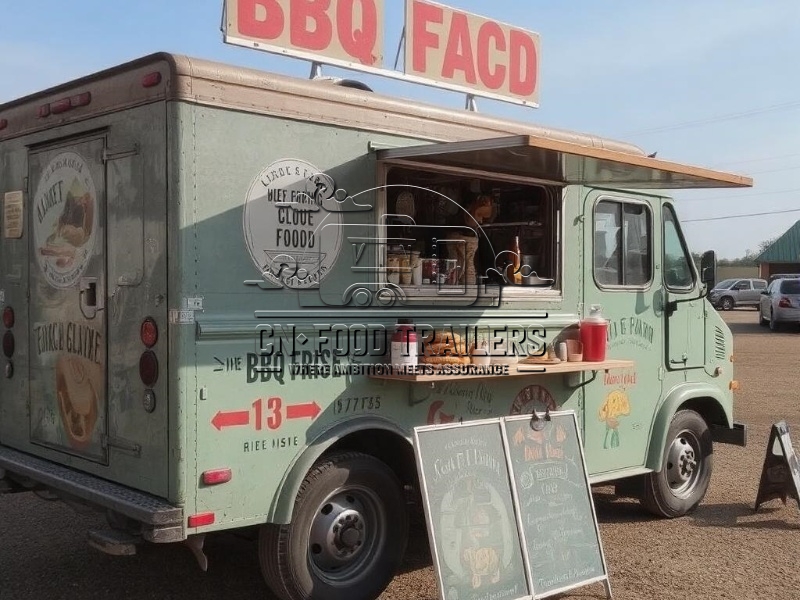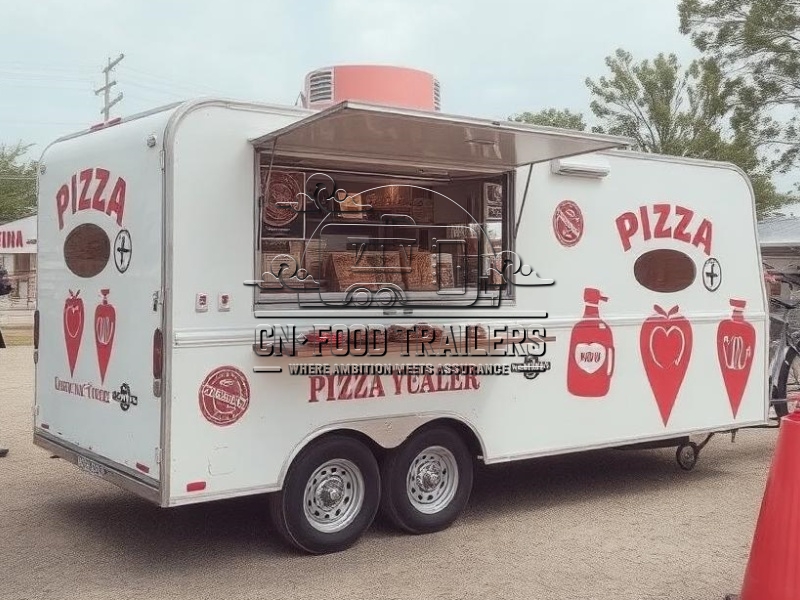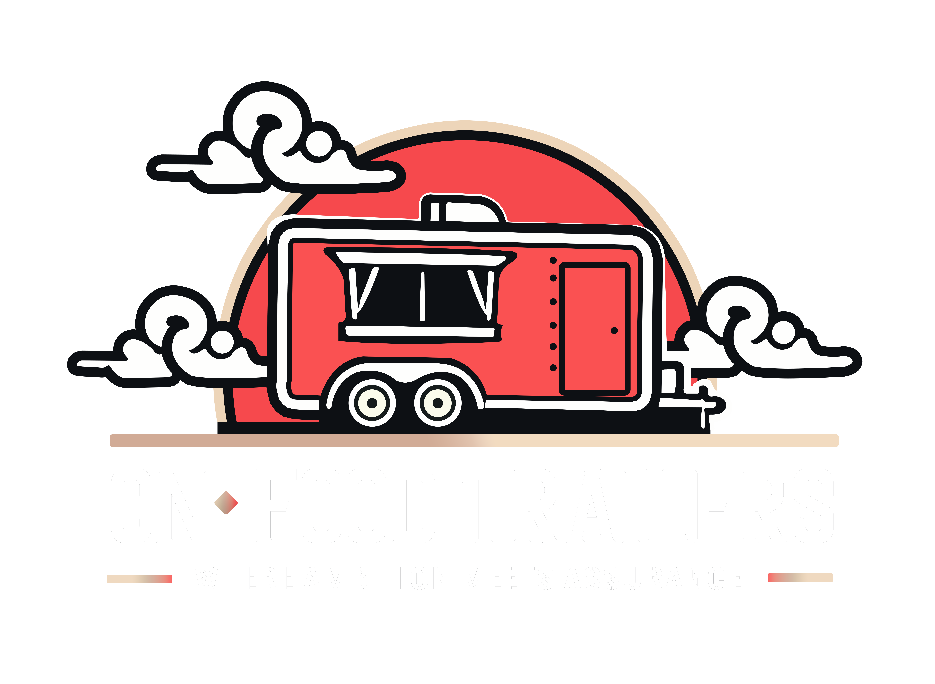Crayfish food trailers usually adopt eye-catching red or orange body design, with neon signs, lobster-themed graffiti or LED scrolling menus to create a warm atmosphere for late-night snacks. The body size is mostly 4-6 meters, equipped with retractable awnings, folding tables and chairs, and garbage recycling devices, which not only meet the needs of open-air dining, but also meet environmental protection standards. Some trailers also have transparent kitchen windows, allowing diners to intuitively experience the whole process of crayfish from cleaning to cooking, enhancing trust and interactivity.

Core Features
1.”Hot-selling single product + multiple flavors” strategy
- Focusing on crayfish, it provides classic flavors such as spicy, garlic, thirteen spices, and iced, and is paired with special snacks (such as edamame, snails, grilled skewers) and drinks (such as beer, sour plum soup), forming a “one car, multiple products” profit model.
2.Seasonal operation and year-round innovation
- Summer is the peak season, and the late-night snack market is seized by extending business hours (such as late night to early morning); in winter, hot foods such as crayfish hot pot and shrimp tail rice are launched, or transformed into a “crayfish theme pop-up store” to maintain the popularity throughout the year.
3.Social attributes and scene-based marketing
- Food trailers are often used as “social catalysts” at music festivals, beer festivals, and camping sites to attract young people to gather; some food trailers provide interactive gameplay such as “lobster blind boxes” and “DIY seasoning tables” to enhance the fun of dining.
4.High cost performance and convenience
- The average per capita consumption is 30-80 yuan, and ready-to-eat packaging or takeaway services are provided to meet the needs of fast-paced consumption.
Internal equipment
1.Core cooking equipment
- Double-layer steamer/wok: used for batch production of spicy, garlic and other flavors of crayfish, supporting high-temperature stir-frying and low-temperature slow cooking.
- Ultrasonic cleaning machine: Efficiently remove crayfish mud and sand, improve cleaning efficiency and food safety.
- Constant temperature insulation cabinet: maintain the temperature of the crayfish out of the pot to avoid the taste degradation.
2.Food processing and storage
- Refrigerator and freezer: Classify and store live shrimp, pre-made sauces and side dishes (such as rice cakes, potatoes).
- Stainless steel workbench: equipped with knives, cutting boards and drain racks, supporting fast sorting and shrimp thread removal.
3.Water, electricity and cleaning system
- Large-capacity water tank and sewage tank: meet cleaning needs, some models are equipped with water purification and filtration devices.
- High-pressure water gun and disinfection cabinet: ensure the hygiene of kitchen utensils and tableware.
4.Brand and operation equipment
- Smart ordering screen: display pictures of dishes, prices and taste choices, and support scanning code ordering.
- Sound system and atmosphere lighting: play popular music, match warm-toned lighting, and create a late-night snack atmosphere.
Application
1.Night market economy and street dining
- Station in crowded areas such as night markets, food streets, and university towns to attract diners with “freshly fried and sold” crayfish, becoming the core scene of late-night snack consumption.
2.Event catering service provider
- Provide customized catering services for music festivals, sports events, and corporate team building, and launch a “lobster set meal + beer” combination to enhance the attractiveness of the event.
3.Tourist attractions and resort facilities
- Provide “crayfish + lake fresh” special packages in tourist areas such as lakes and seasides to meet tourists’ expectations for local flavors.
4.Brand co-branding and flash marketing
- Cooperate with beer brands and e-commerce platforms to launch limited flavors (such as “craft beer crayfish”), or promote new products through “lobster flash car”.
5.Community group buying and takeaway services
- Some food trailers cooperate with communities to carry out “crayfish group buying”, or provide 30-minute delivery services through takeaway platforms, covering family consumption scenarios.






Leave A Comment